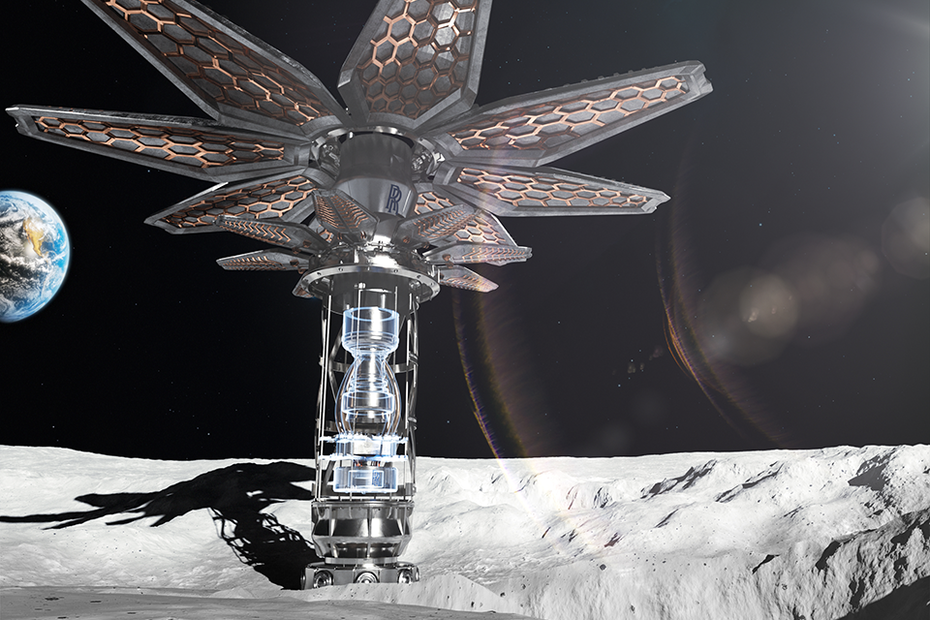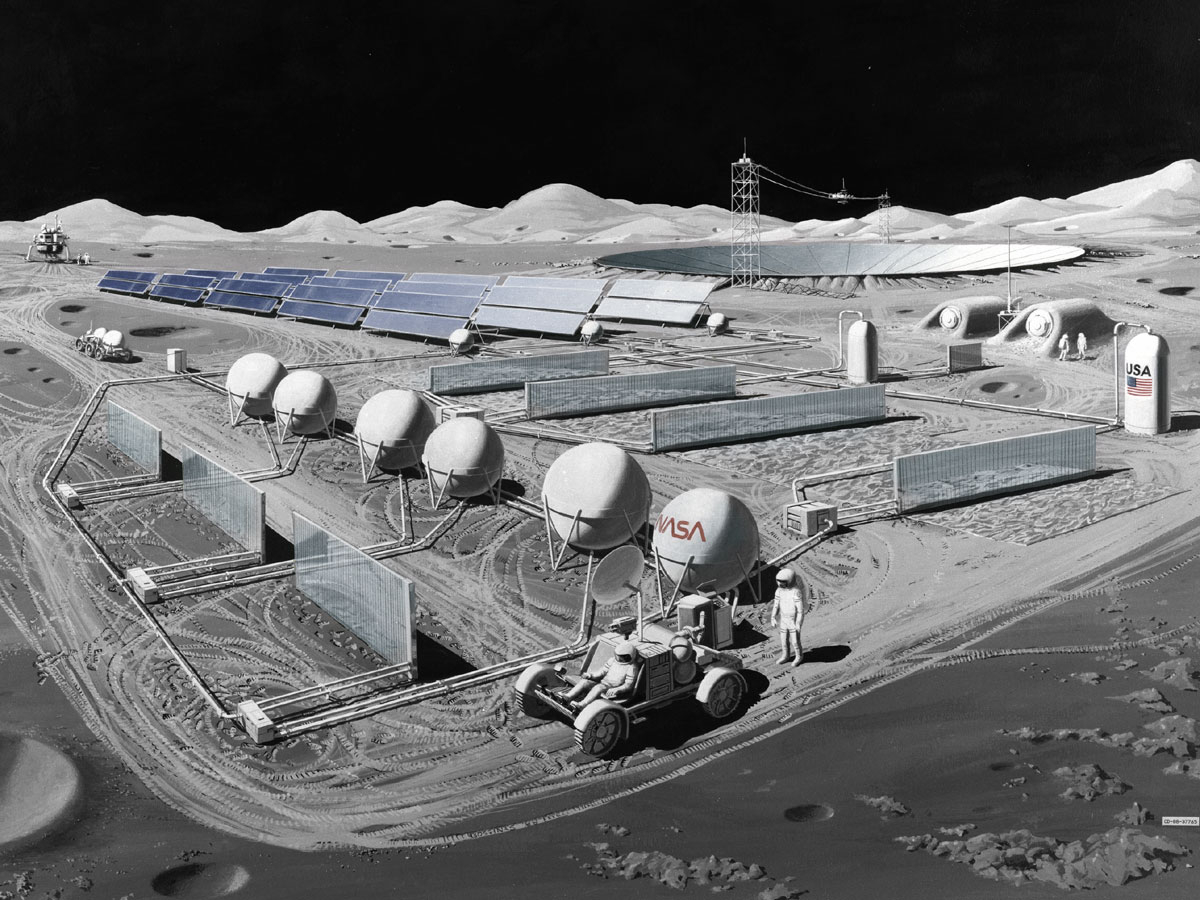10 fascinating projects that people could soon realize on the moon
With its Artemis mission series, Nasa has once again set its sights on the moon. She is far from alone in this. New lunar projects are announced almost weekly. Last but not least, the moon could be an important milestone on the way to Mars. So there are enough reasons to take a look at the numerous ambitious moon projects of the various space agencies and space startups. In the years to come, people could…
Contents
- 1 1. … put a student-developed rover on the moon.
- 2 2. … finally set foot on the moon again.
- 3 3. … live on the moon.
- 4 4. … create internet on the moon.
- 5 5. … build a telescope on the moon and do astronomy from there.
- 6 6. … build a data center on the moon.
- 7 7. … build houses on the moon with the 3D printer.
- 8 8. … start up a nuclear reactor on the moon.
- 9 9. … build an inflatable moon settlement.
- 10 10. …fly from the moon to Mars.
1. … put a student-developed rover on the moon.
The first “private” lunar rover is scheduled to go into service as early as 2023. The space company Astrobotic plans to send a lander to the moon that will carry the student-developed rover on board. For reasons of cost and space, it is smaller than one would expect and comes with all sorts of other technical gimmicks on the moon.
2. … finally set foot on the moon again.
One step after the other: After NASA sent an unmanned Orion capsule around the moon and back to Earth as part of its Artemis mission, a manned space capsule is to be circling the moon again soon. In a further step, something should happen that has not been attempted for decades: the landing of a NASA crew on the moon, probably in 2025 or 2026.
The space suit for NASA’s Artemis III mission to the moon. (Image: Axiom Space)
The success of this mission should be essential for the timely pursuit of many other ambitious moon projects. Failure could ruin many plans or delay them for years. As our list shows, many projects could be realized on the moon without direct human intervention. But some things just don’t work without staff. After all, NASA wants people to be able to return soon…
3. … live on the moon.
A landing with a short walk on the moon is not the end for Nasa. The aim is that people would soon live and work on the moon. The moon would then be a new science location and not just a tourist destination. When is it supposed to be? Still in this decade, as the head of the Orion program hinted at the end of 2022.

Artemis 1: The 12 best pictures of the moon mission
4. … create internet on the moon.
There should be 4G internet on the moon by 2023. The Finnish telecommunications company Nokia wants to see to that. Using a SpaceX rocket, the technology required for this, together with – how could it be otherwise – a moon rover should be shot onto the lunar surface.
In the medium term, a 4G network should help to transmit data more quickly on the moon, but also improve communication from there to earth. With the upcoming mission, Nokia has to show that the idea basically works. At the same time, the European Space Agency (ESA) is planning to set up a communication network on the moon using satellites.
5. … build a telescope on the moon and do astronomy from there.
Behind the name “Lunar Surface Electromagnetics Experiment-Night” hides another ambitious Nasa project. In 2025, a radio telescope is to be brought to the dark side of the moon for the first time. Shielded from terrestrial disturbances, it is hoped that there will be better reception of cosmic background radiation, which could provide information about the origin of the universe.
6. … build a data center on the moon.
Where is data particularly safe? Not many privacy advocates would probably have come up with the answer “On the moon, of course!” But the American startup Lonestar Data Holdings has already raised several million dollars in a first round of financing to set up a data center on the moon.
In fact, it is also about the secure storage of data that will be collected directly on the moon as part of future moon missions. A first mini center is to be sent to the moon this year.
7. … build houses on the moon with the 3D printer.
3D printers are likely to play an increasingly important role in future space missions. Should there be a manned Mars mission, for example, NASA wants to have the housing for the crew “printed” directly on site in order to save weight and space on the flight to the red planet.
The American startup icon has already built such a test housing in Texas using a 3D printer. In addition, the US space agency has commissioned the startup to develop a new 3D design technology. Huge robots should be able to build roads, landing gear and houses on the moon.
Editor’s Recommendations
8. … start up a nuclear reactor on the moon.
In 2029, Rolls-Royce plans to put a micro-reactor on the moon together with the British space agency. The company has already received appropriate funding and presented an initial concept. In the future, such compact nuclear plants should be able to supply operational bases on the moon or Mars with energy.

This is what the Rolls-Royce microreactor could look like one day. (Graphics: Rolls Royce)
9. … build an inflatable moon settlement.
The “Pneumo Planet” concept commissioned by Esa describes a lunar habitat made of ultra-light, inflatable structures that draw their supply energy from solar mirrors. It should provide a complete ecological cycle for the self-sufficient production of food and oxygen. However, “Pneumo Planet” has not yet progressed beyond concept status.
It is not yet possible to foresee which plans will ultimately win the race for the concrete design of the first fixed lunar base. However, thanks to the recent moon hype, it has become more and more likely that there will be an inhabited base.
10. …fly from the moon to Mars.
The moon is an exciting place for a wide variety of players in the race to explore space, but in the more ambitious projects it is often understood as an intermediate step to something bigger: it’s called “Moon to Mars”. at NASAbecause sooner or later the space agency wants to set up a base on the lunar surface from which it can be launched to Mars more easily and quickly than it would be possible from Earth.



